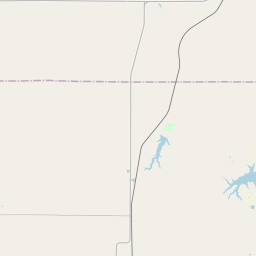The Camp of Co. 788 of the Civilian Conservation Corps
Historical marker location:






- March 31, 1933: President Franklin D. Roosevelt signs the Emergency Conservation Work (ECW) Act into law, establishing the Civilian Conservation Corps as part of his New Deal program.
- April 5, 1933: The CCC is officially launched, providing employment opportunities for unemployed young men between the ages of 18 and 25.
- 1933-1942: The CCC enrolls over 2.5 million young men from economically disadvantaged families, providing them with jobs, vocational training, and relief during the Great Depression.
Camp Life: CCC enrollees live in camps located in rural areas and work on various conservation projects across the United States. They receive food, shelter, clothing, and a small wage, with a portion of their earnings sent back home to support their families.
Conservation Projects: The CCC undertakes a wide range of conservation projects, including reforestation, erosion control, trail construction, forest fire prevention, wildlife conservation, historic site restoration, and the development of public parks.
Collaboration with Other Agencies: The CCC works in collaboration with various federal agencies, including the National Park Service, U.S. Forest Service, Bureau of Land Management, and Soil Conservation Service, to implement conservation programs and projects.
Educational and Vocational Training: In addition to their work, CCC enrollees receive educational and vocational training, such as literacy classes, courses in conservation and forestry, and technical skills development.
Military Training: During World War II, the CCC shifts its focus to providing military training for its enrollees, preparing them for military service.
- July 1, 1942: As the United States transitions into wartime efforts and the economy improves, the CCC gradually loses its significance. The program officially ends with the termination of new enrollments.
The Civilian Conservation Corps played a significant role during the Great Depression, providing employment, relief, and skills training to young men while accomplishing vital conservation work across the country. The program's legacy can still be seen today in the numerous parks, forests, and other public lands that were developed or improved through the efforts of CCC enrollees.
Kansas is known as the "Wheat State" and is a major producer of wheat, as well as other crops like corn, soybeans, and sorghum.
The county's development was greatly influenced by the expansion of the railroad in the late 19th century. The Atchison, Topeka and Santa Fe Railway played a significant role in shaping Ford County's economy and attracting new residents. The introduction of rail transportation brought increased opportunities for trade and commerce, leading to the establishment of towns such as Dodge City.
Dodge City, the county seat and largest city in Ford County, quickly became a center for cattle trading and ranching. During the late 1800s, the city gained fame as a wild and lawless frontier town, known for its numerous saloons, brothels, and notorious outlaws. However, efforts were made to civilize the town, and by the early 20th century, Dodge City had transitioned into a more orderly and prosperous community.
In more recent years, Ford County has experienced growth and diversification in its economy. Agriculture remains an essential component, with crops such as wheat, corn, and sorghum being major contributors. Additionally, the county has seen the development of manufacturing industries, including food processing and automobile parts production. Ford County continues to be a vibrant and dynamic community, preserving its rich history while embracing the opportunities of the present.
Ford County Timeline
This timeline provides a condensed summary of the historical journey of Ford County, Kansas.
- 1855 - Ford County is officially established as a county in the Kansas Territory.
- 1873 - Dodge City is founded as the county seat of Ford County.
- 1875 - The "Dodge City War" erupts, a conflict between lawmen and saloon owners.
- 1878 - The Atchison, Topeka and Santa Fe Railway reaches Dodge City, boosting the town's growth.
- 1882 - The first cattle shipment from Dodge City's stockyards is sent to Eastern markets.
- 1884 - Dodge City becomes known as the "Wickedest Little City in America" due to its wild and lawless reputation.
- 1910 - The population of Dodge City reaches its peak at around 4,000 residents.
- 1925 - The Boot Hill Museum is founded in Dodge City to preserve the town's Wild West history.
- 1942 - The United States Army establishes the Dodge City Army Airfield during World War II.
- 1951 - The Dodge City Airport is constructed.
- 1963 - The Longhorn Building, a historic hotel in Dodge City, is added to the National Register of Historic Places.
- 1983 - The Boot Hill Casino & Resort opens in Dodge City.